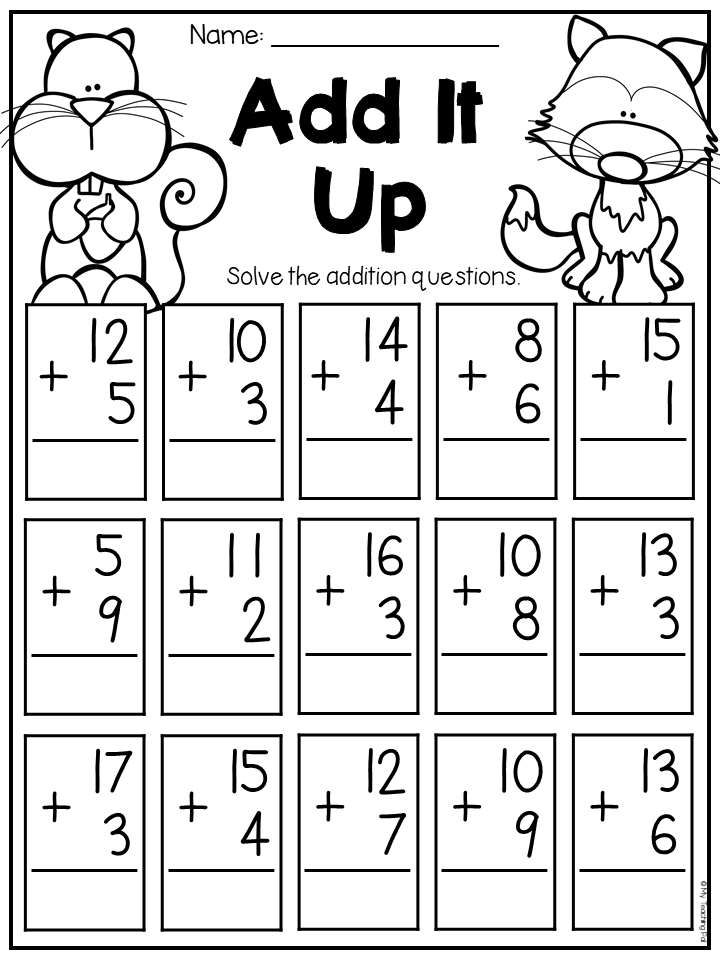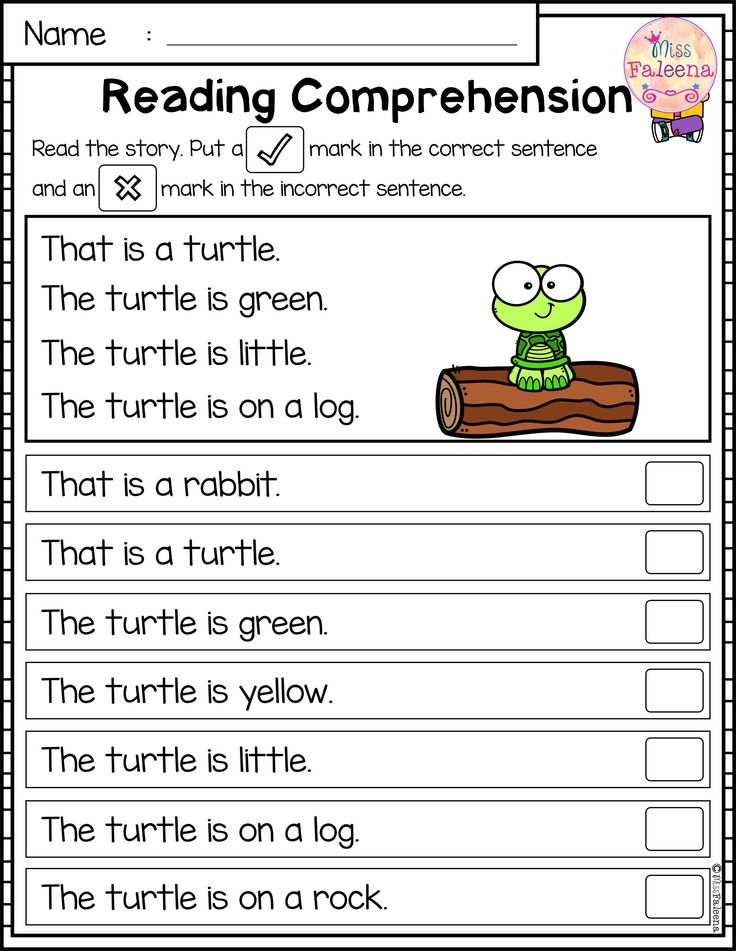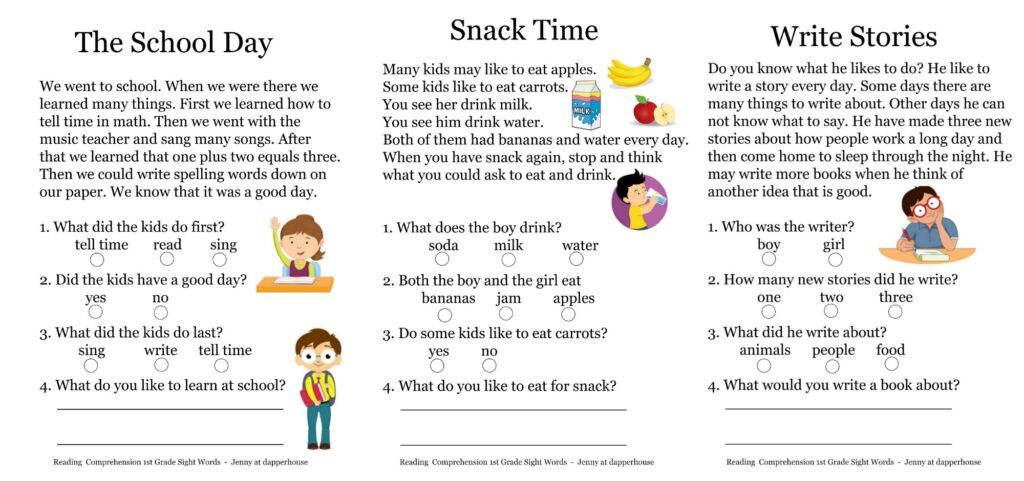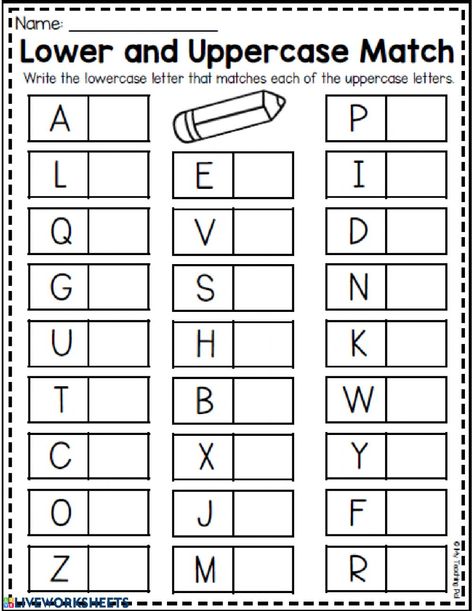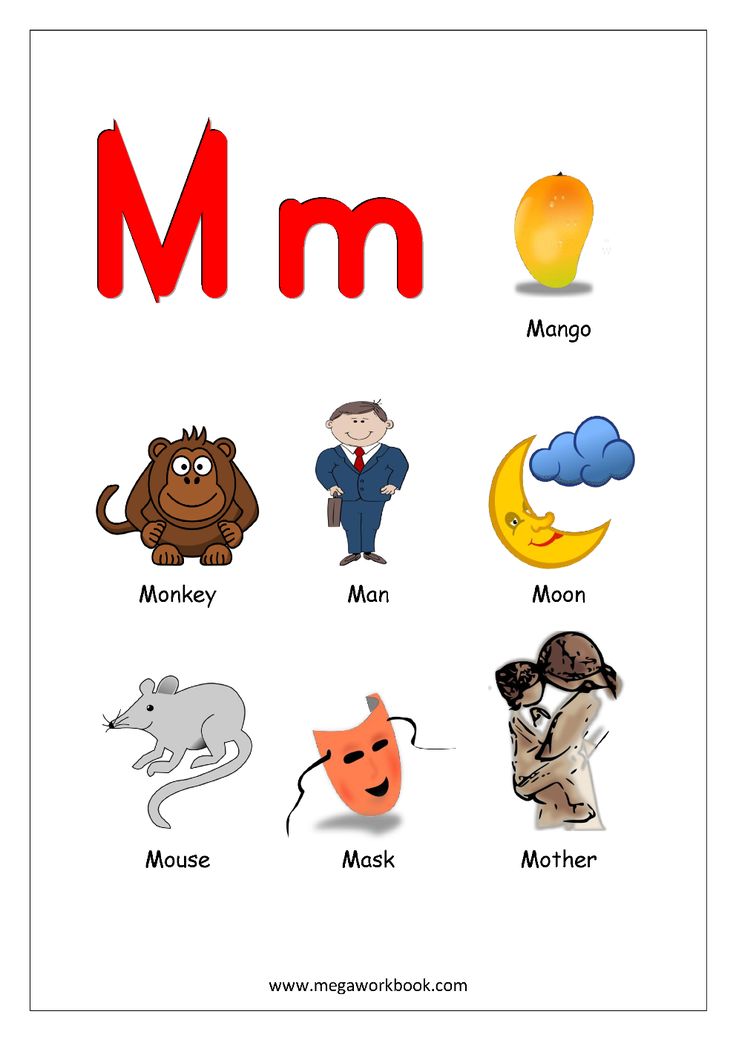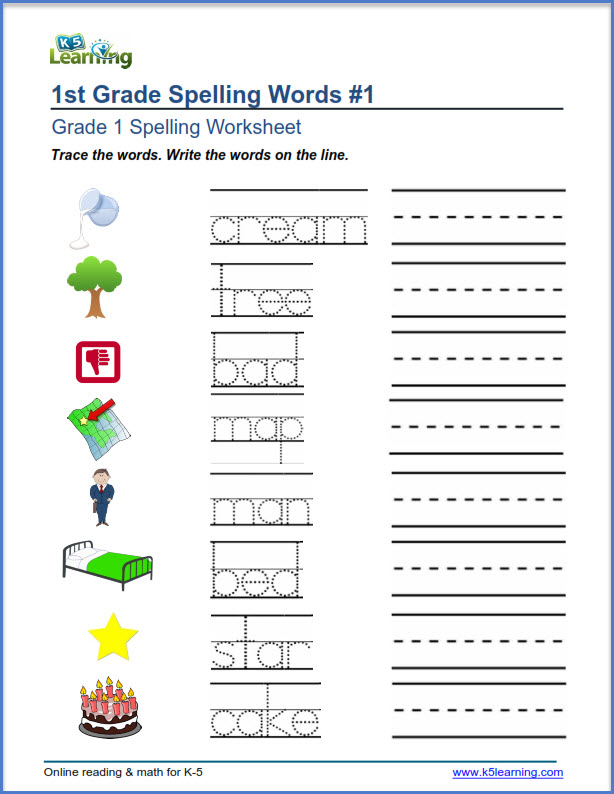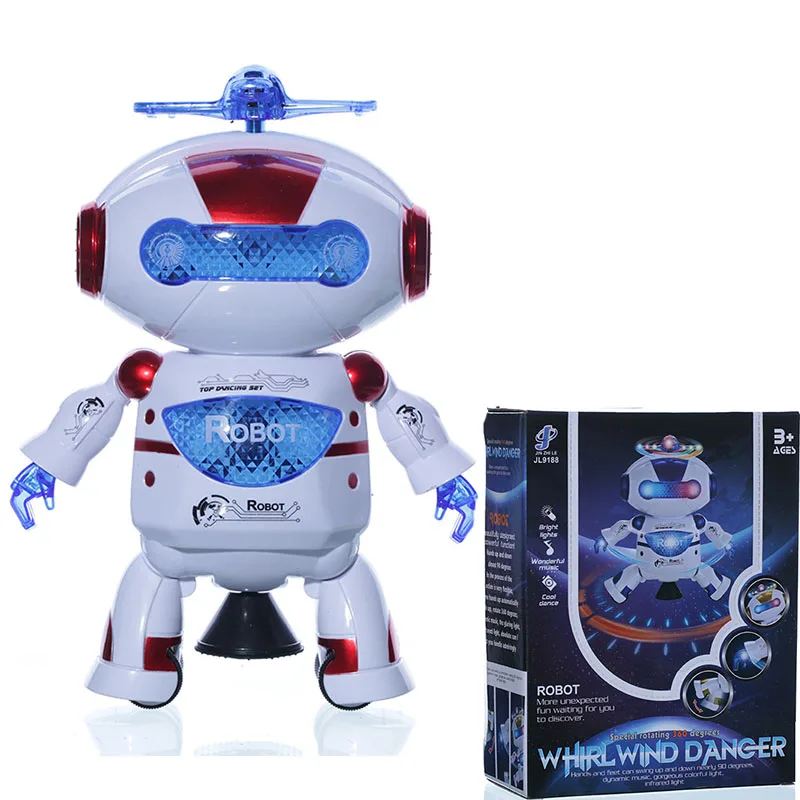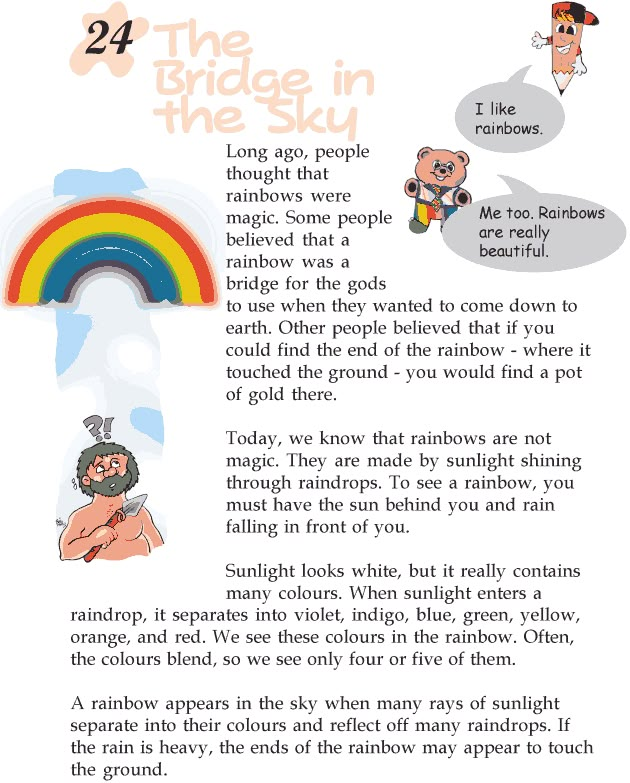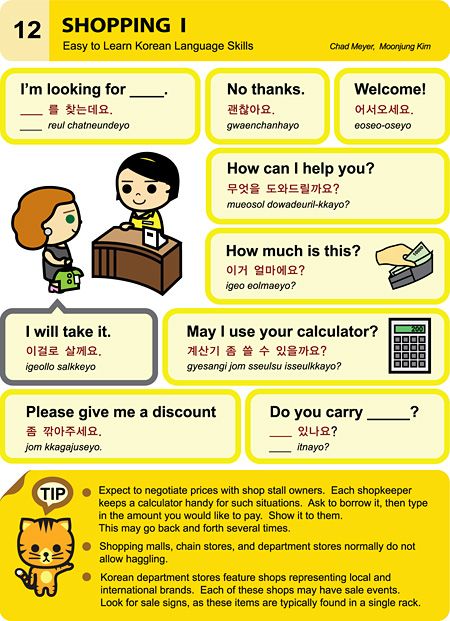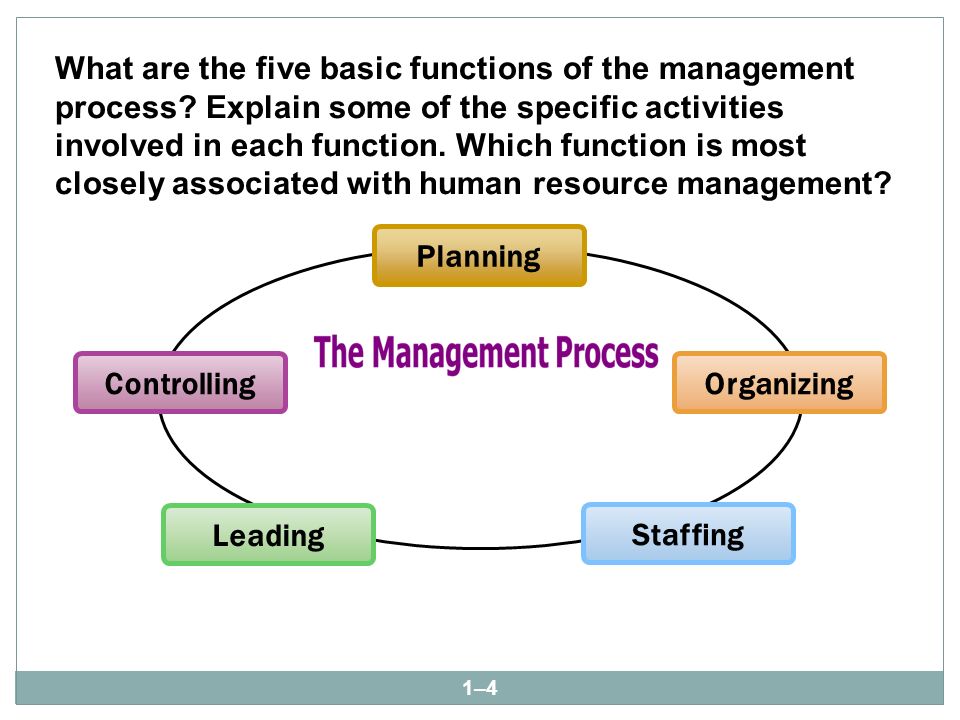Addition for pre k
How to Teach Addition for Preschoolers-The Fun Way
Inside: Teaching addition for preschoolers can feel a big job. Thankfully, it doesn’t take much to make learning fun for preschoolers! After reading this post, you’ll know if your preschool has the necessary foundation to begin addition, and some strategies to make learning addition fun!
I watched him study his teddy grahams. My 4-year-old was enjoying his snack, and had split his teddy grahams in two piles. “Mommy, I have 4 here and 5 here. How many do I have?”
We have been working on counting for a long time and he’s doing great. Now, he’s naturally trying to figure out how many he has if he combines two groups of objects.
As a former kindergarten teacher, I know we have to be careful about jumping ahead before he’s ready. Having a strong foundation of number sense is essential as he learns new math skills.
We also don’t want to introduce him to skills that he’s not ready for. Trying to push kids to learn skills before they are ready could create frustration to the point of hating learning. Some children might not be developmentally ready to learn it, and it could even plant a lifelong belief that they are not capable of learning.
At this age, and really at any age, one of the most important goals is that kids are learning through play, and having fun. It is great to challenge them if they are ready for some more rigorous thinking. We have to challenge them carefully, being intentional to protect the wonder and excitement of learning new things.
What Age Should Addition and Subtracton Be Introduced?
Addition is a kindergarten standard, and typically is introduced in the spring of your child’s kindergarten year. If your child has a strong foundation of counting, number sense, and more/less, you can introduce addition by age 4-5.
The ability to add is not a requirement at the beginning of kindergarten, so if your child is in preschool, don’t put too much pressure on your child (or yourself) to learn to add.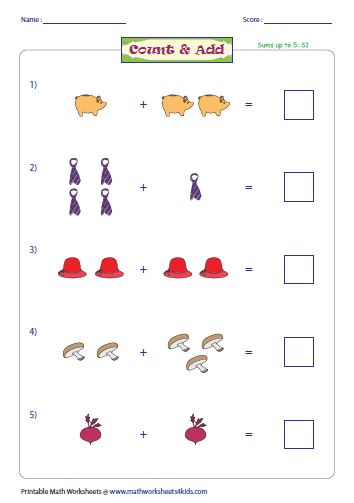 It’s more important to have a solid foundation before moving on.
It’s more important to have a solid foundation before moving on.
What Preschoolers Should Know Before Starting To Learn Addition
There are many foundational skills preschoolers should be confident in before learning addition.
- Counting
- Use “junk tubs” which are tiny containers filled with miscellaneous items. Have your child take a handful and count them, sort them, and make a pattern. Put it back and take a new handful. The next day, do the same activity but with a different item. At this age, new items to count are basically a whole new activity.
- To make your own junk tubs, just collect items around your house that you could put into small containers. Your goal, in the beginning is that their small handful would be less than 20 items. (If you think it will be more than 20, just put 20 items in each tub to start with.)
- Some ideas are:
- pom-poms
- different types of macaroni
- keys (You know, the ones that you have no idea what they go to anymore)
- gift cards (which are surprisingly good for sorting)
- a bag of rocks from the dollar store
- circle caps from applesauce pouches
- cubes
- seashells
- plastic animals
- buttons
- dyed beans
- dyed pumpkin seeds
- Some ideas are:
- Count Throughout Your Day
- Count the number of your child’s steps from their room to the kitchen, as you go down the stairs, to the car, etc.
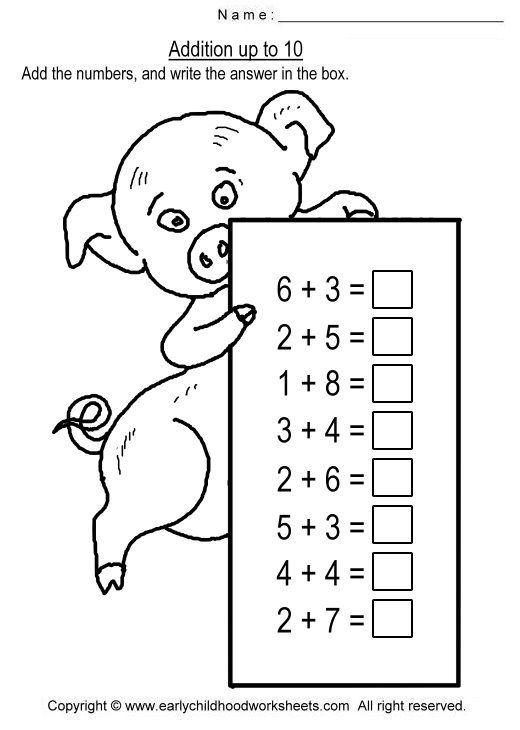
- Ask your child to count how many socks came out of the dryer as they are helping with laundry.
- Have your child count how many of a certain toy they have. (Aim to keep the number less than 20.)
- Count the number of your child’s steps from their room to the kitchen, as you go down the stairs, to the car, etc.
- One-to-One Counting
- When a child is first learning to count objects, I always teach them to move each item as they count it instead of just point and count. If they move the item and make a new group, it is easy to tell which items have already been counted and avoid counting the same item twice. One-to-one counting is only saying one number as they move one item. The alternative is counting at a different pace than they are moving items. For example, move one bean while saying “one,” move the second bean while saying “two,” move the third bean while saying “three,” instead of move one bean while saying “one, two, three,” move the second bean while saying “four, five, six,” etc.
- Cardinality
- This is understanding the last number you say when you are counting is how many items you have in your set.
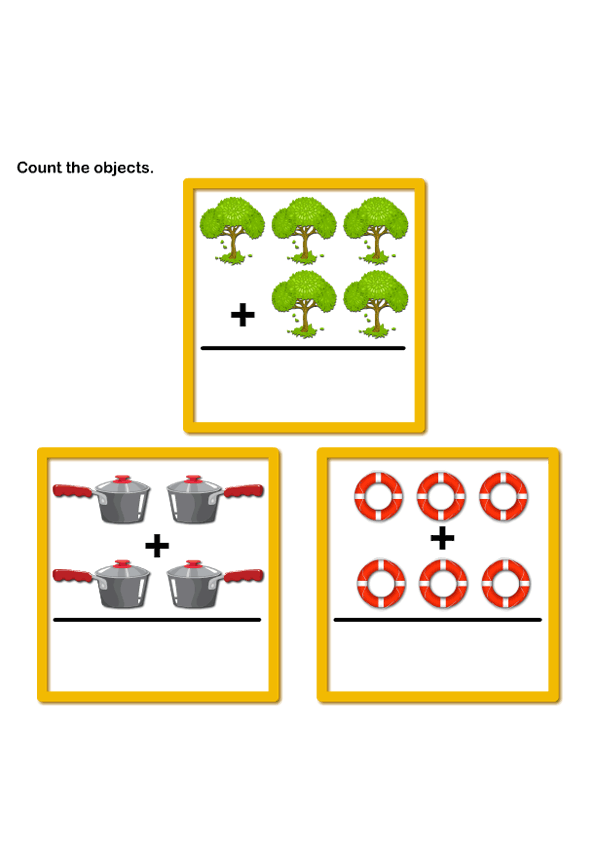 Sometimes when young children are counting, they think they are “naming” each item. After they are finished counting if you ask them how many they have, they look at you with a confused look on their face as if to say “How should I know?” They think they have given the last item they counted the name of “six” instead of understanding the have a group of six. To practice this, when your child is finished counting a group, simply ask them “How many are here?” When I ask that question, I usually touch the whole group of items the child has just counted so they know I am asking about the entire group.
Sometimes when young children are counting, they think they are “naming” each item. After they are finished counting if you ask them how many they have, they look at you with a confused look on their face as if to say “How should I know?” They think they have given the last item they counted the name of “six” instead of understanding the have a group of six. To practice this, when your child is finished counting a group, simply ask them “How many are here?” When I ask that question, I usually touch the whole group of items the child has just counted so they know I am asking about the entire group.
- This is understanding the last number you say when you are counting is how many items you have in your set.
- Number Recognition (0-10)
- My son first started getting interested when I was cooking and would let him press the numbers on the microwave. I would tell him “Press the 5.” He was excited when he started learning what numbers to press when I asked him to. The idea with this is to sneak numbers in whenever an opportunity arises. When we are in an elevator, I tell him what number to press and give him a minute to figure it out.
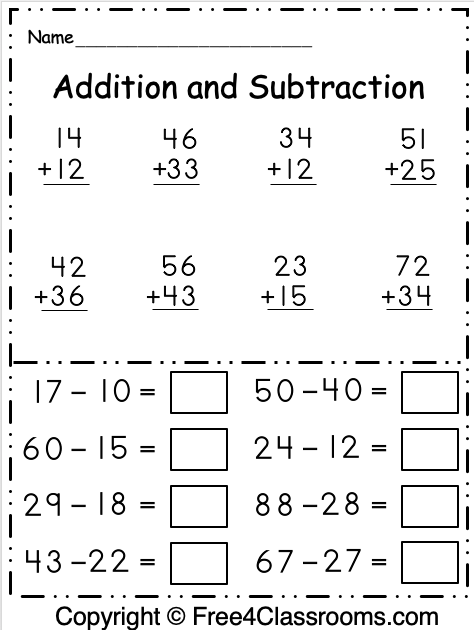 Our van has a large digital clock that he can see from his car seat, so we talk about numbers when we are in the van. We talk about clocks, the numbers on remotes, the numbers on our mailbox. Anywhere you see numbers, point them out and have your child tell you what number they see.
Our van has a large digital clock that he can see from his car seat, so we talk about numbers when we are in the van. We talk about clocks, the numbers on remotes, the numbers on our mailbox. Anywhere you see numbers, point them out and have your child tell you what number they see. - We love to play with magnetic numbers on the fridge, foam numbers in the bath, and a puzzles with numbers.
- Once your child can recognize numbers, have them grab a pile of items from your junk tub, count, and match a number. For instance, if they have a pile of 6 things, they match it with the number 6. Use pre-made numbers at first. This could be numbers you have written on a post-it or index card, or magnetic numbers, foam bathtub numbers, numbers from a puzzle, etc.
- My son first started getting interested when I was cooking and would let him press the numbers on the microwave. I would tell him “Press the 5.” He was excited when he started learning what numbers to press when I asked him to. The idea with this is to sneak numbers in whenever an opportunity arises. When we are in an elevator, I tell him what number to press and give him a minute to figure it out.
- Greater Than, Less Than
- The terms “greater than” and “less than” can be confusing…. until you introduce the concept using cookies (or something your child loves) as an illustration. It isn’t necessary to introduce the symbols yet.
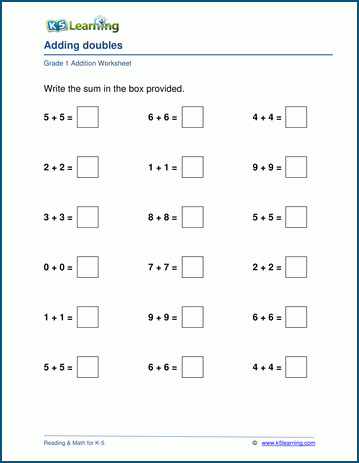 “There are two piles of cookies, but we have to pick one! Which one do you think he wants? This pile has 10 cookies but my second pile only has one cookie.” Of course, the child will pick the pile with more. Discuss the terms more and less.
“There are two piles of cookies, but we have to pick one! Which one do you think he wants? This pile has 10 cookies but my second pile only has one cookie.” Of course, the child will pick the pile with more. Discuss the terms more and less. - Use these terms during play. Do you have more red or blue blocks? Do you have more socks or shoes? What about trucks or cars?
- The terms “greater than” and “less than” can be confusing…. until you introduce the concept using cookies (or something your child loves) as an illustration. It isn’t necessary to introduce the symbols yet.
- One More, One Less
- After your child has mastered counting, you can introduce the idea of “one more” and “one less.” When they have finished counting a group of objects, add one to their pile and ask “How many do you have now?” Often, they will have to recount the entire group. This is ok. Keep working on it until they do not have to count the entire group.
- Next, repeat the same activity but instead of physically adding an object to their pile, just ask them “What is one more?” “What is one less?”
Are you tired of hearing “It’s TOO HARD!” followed by a meltdown?
Perseverance is the biggest predictor of success, even more than raw talent or aptitude.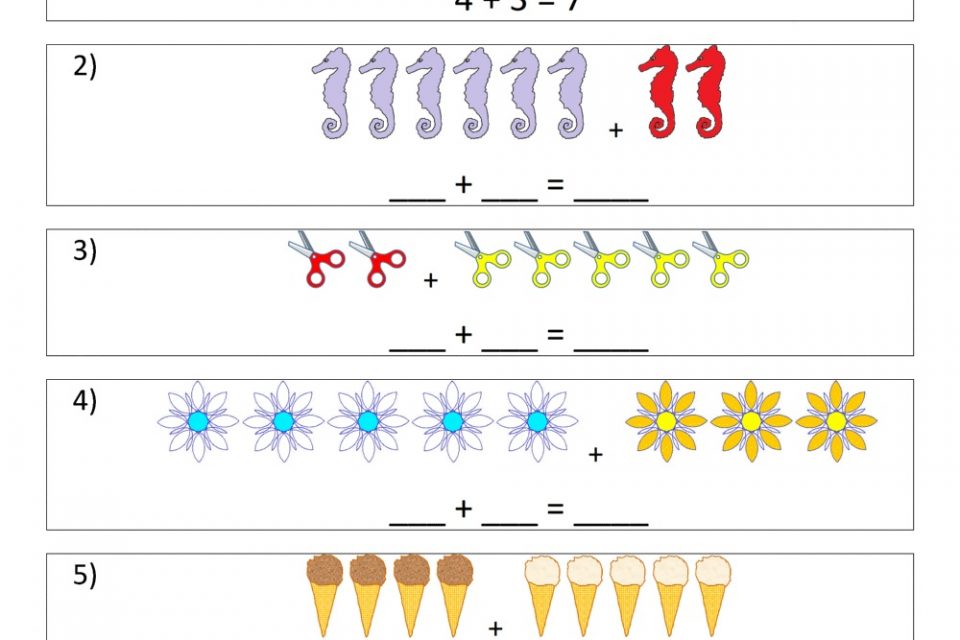
Grab a FREE video lesson to teach your kiddo one of the keys to perseverance…which is how we talk to our brain.
They’ll learn what to say when they encounter something difficult, and why it’s so important!
How Do You Explain Addition to a Preschooler?
Use concrete objects (like items from the junk tubs above), make two piles. Move each object to a new (combined) pile while counting. At the end ask your child “How many do you have when you put both groups together?”
Start with numbers that will add up to less than 5. Once your child understands the concept of addition, you can go up to 10.
Don’t worry about writing (or reading) equations when first starting out.
Activities That Teach Addition To Preschoolers
Addition is a big topic to begin teaching your preschooler, but if your child has a solid foundation learning addition will come easily. Start with concrete objects. The more children are able to touch and manipulate toys, the easier it will be for them to learn what they actually are doing by adding.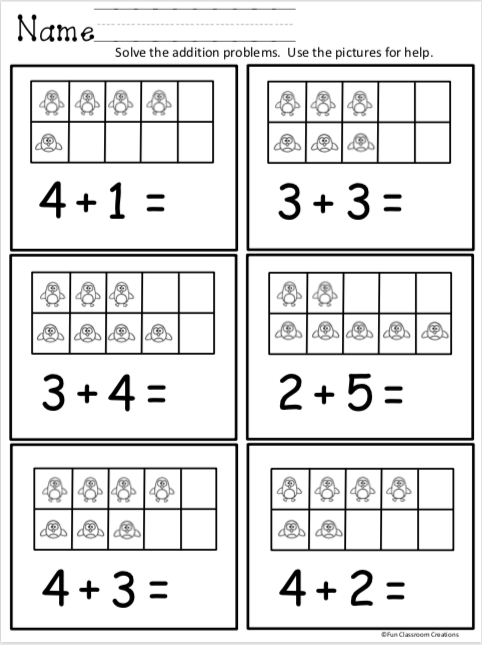
- Start with having the child complete sets with numbers up to 5. For example, if you have 3 counters, but want 5 how many more do you need? This can also be explained as “counting on.” In the beginning, always have your child physically do this.
- After your child is comfortable with making numbers to 5, have them make numbers to 10.
- Next, you can start working on addition to 5. Don’t worry about introducing the symbols yet. You can either verbally tell them what to add, or they can roll a dice. If you choose to roll a dice, use tape or stickers to cover up the 4, 5, and 6, and draw 1, 2, or 3 dots over them.
When teaching addition to preschoolers, be sure to spend a lot of time on each step before moving on to the next step. At this age, kids very rarely get bored with these activities. Having them do the same activity with different manipulatives feels like a whole new activity.
Even after you think they understand what they are doing, have them keep practicing.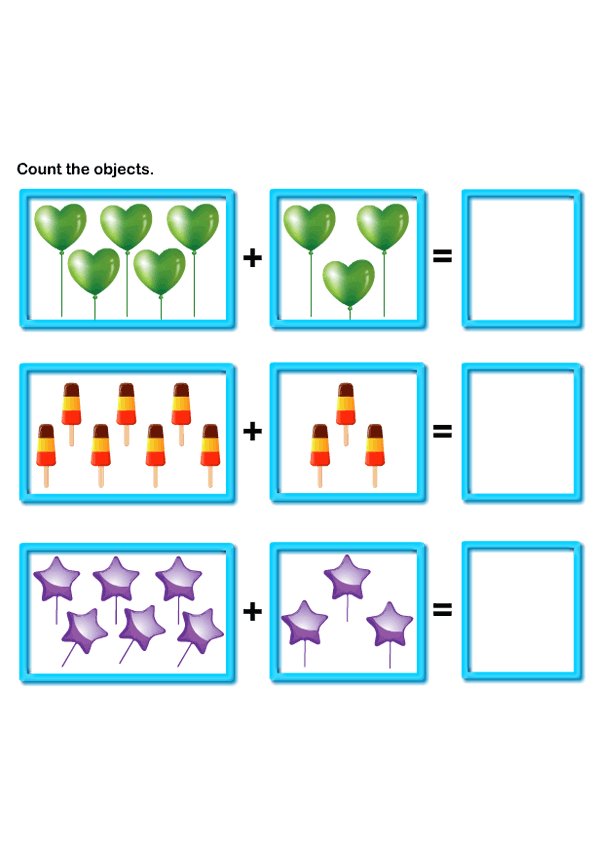 It’s important that they have a solid foundation before moving on to the next thing. These basic skills they are learning will be the basis of their math learning for their entire lives.
It’s important that they have a solid foundation before moving on to the next thing. These basic skills they are learning will be the basis of their math learning for their entire lives.
Dice Addition
Take two dice, and cover the numbers 4, 5, and 6 with stickers. On those stickers draw 1, 2, and 3 dots. Have your child roll both dice. Get physical objects to represent the numbers rolled. If you rolled a 2 and 3, make a pile with 2 objects, and 3 objects.
Count all objects, moving each item to a new (combined) pile as you count. How many do you have altogether?
Any game that uses dice is great practice for subitizing, which is important for more advanced math skills.
Flash Card Addition
Similar to the game above, use flash cards instead of dice. Make a deck of cards with 1, 2, and 3’s. Use a combination of written numbers and dots. Represent the numbers different ways. Write the number 2 on one card, draw 2 flowers, and draw 2 dots. Draw two cards, and make piles of physical objects to represent the numbers rolled.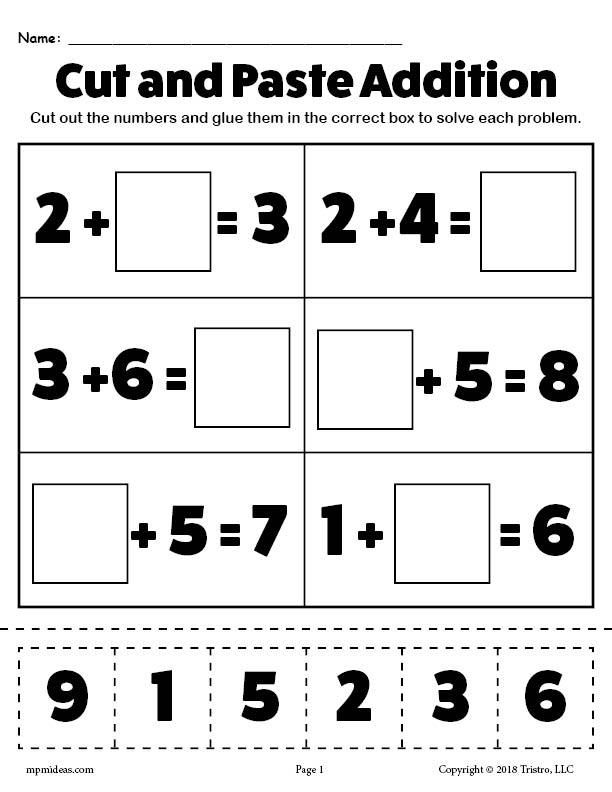 If you rolled a 2 and 1, make a pile with 2 objects, and 1 objects.
If you rolled a 2 and 1, make a pile with 2 objects, and 1 objects.
Count all objects, moving each item to a new (combined) pile as you count. How many do you have altogether?
Games
As an Amazon Associate, I earn from qualifying purchases at no additional cost to you.
Sum Swamp
This is a fun way to practice beginning addition skills. You race through the swamp, while meeting fun swamp creatures. You will still want to use physical objects when solving addition problems.
Pop! Addition & Subtraction Game
Spin the spinner and keep the gumballs for correct answers. You will still want to use physical objects to solve addition and subtraction problems.
Board Games
One of my favorite ways to practice addition is to add a deck of cards to any board game. Make your own deck of cards, and instead of writing 2+3 on the card, make a group of 2 triangles on the top, and a group of 3 triangles on the bottom. (Make cards for all different combinations up to 5).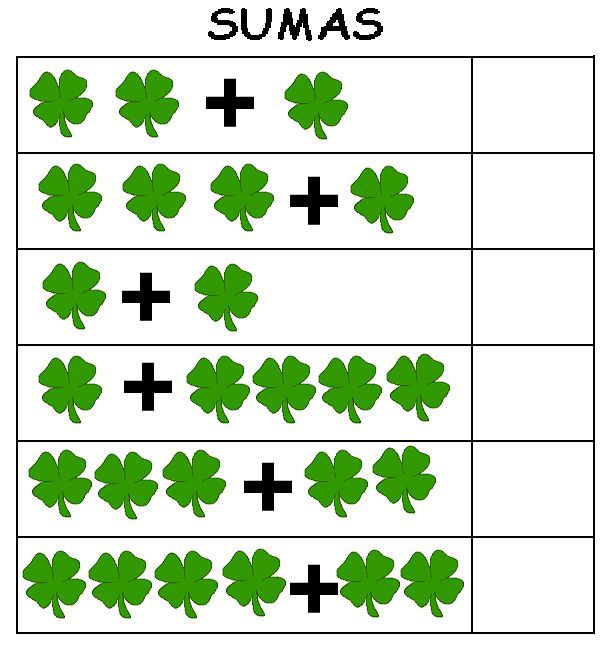
When playing your favorite board game, everyone has to draw an addition card before their turn. When your child draws a card, they can count the groups to find out how many altogether. You may even need your child to check your answers to make sure you are adding correctly!
Monster Under the Bed
This game is very popular with kindergarteners! Using an egg carton, cut the lid in half but leave both halves attached. Tape one half down so it can’t be opened. Put 5 buttons or pom-poms in the egg carton and close the whole lid. Shake. Open the lid. If you only see 2 pom-poms, how many are under “the bed?”
This game helps with number combinations. Start with 5, and once your child gets really comfortable with those, increase the number by 1.
Visualize This…
When teaching addition, don’t use the terms “plus” or “equals.” State the equation as “three and two is the same as five.” Eventually you will use those terms but when you are starting out, replacing the word “plus” with “and” better communicates the physical act of what you are doing.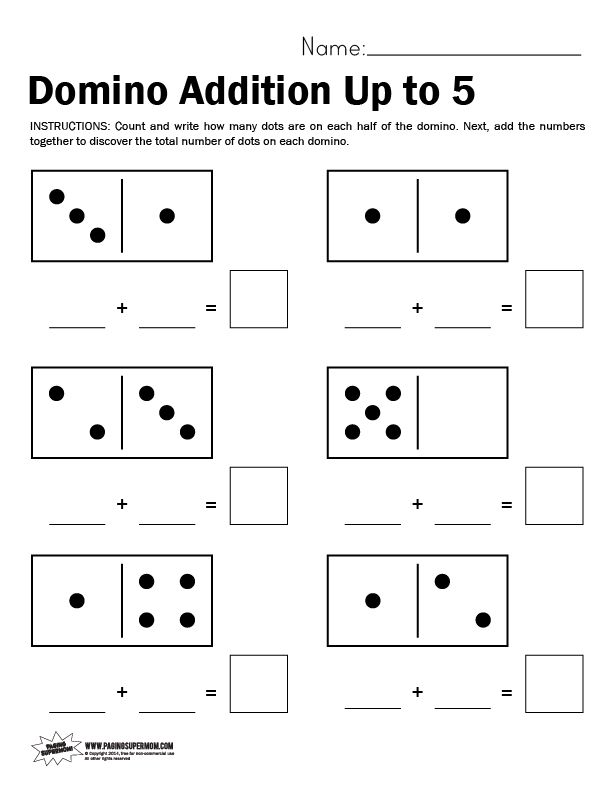
Saying “is the same as” instead of “equals” helps set up the child for future math problems. In school, children are starting to see algebraic problems earlier and earlier. They need to see a math equation more as a balance scale with both sides balancing out. The middle would be an equal sign.
Take Away the Pressure
Kids will not be required to know addition when entering kindergarten. Knowing addition but not having a good foundation will hurt them in the long run. Wait until your child has a strong foundation and is curious enough about numbers to be excited and engaged to learn! Keep it fun and enjoy time playing games together, or simply adding your teddy grahams.
Want More?If you liked this, you’ll love:
13 Genius Dot Stickers Activities That Will Delight Preschoolers
6 Simple Activities To Do With Preschoolers At Home
6 Ways to Teach Subitizing and Strengthen Number Sense
Your TurnWhat are your favorite activities for teaching addition?
How to Teach Addition & Subtraction to Preschoolers [Easy Way]
Teaching addition and subtraction to preschoolers can be quite a task.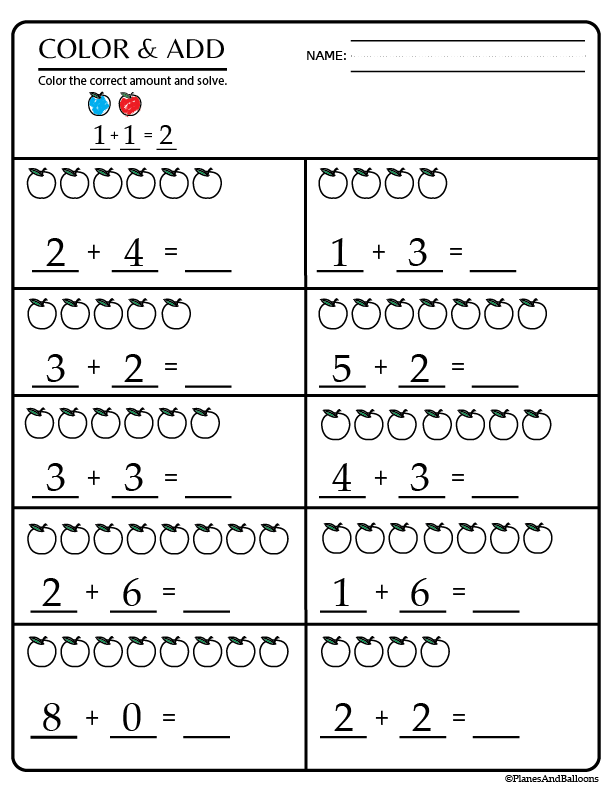 But what if I told you it can be fun, exciting, and easy at the same time?
But what if I told you it can be fun, exciting, and easy at the same time?
Preschoolers can be taught addition and subtraction using countable manipulative objects. Choose activities that include adding and taking away objects to and from a chosen set of objects. Use visually stimulating objects and try to make the concepts as concrete as possible.
Although addition and subtraction can seem too much for preschoolers, exposure to such concepts early in their life can help them massively in the long run. Read on to find out the different activities that can be used to clearly convey the concept of addition and subtraction to preschoolers.
Can 4- and 5-Year-Olds Add and Subtract?Children as young as 4 years old can count up to at least 20 and add by counting fingers on the hand.
Although subtraction may seem a little difficult to teach at first, 4 and 5 years olds can be introduced to the concept using simple activities.
Remember that the activities used to teach addition and subtraction for 4 and 5 year olds should be as concrete as possible.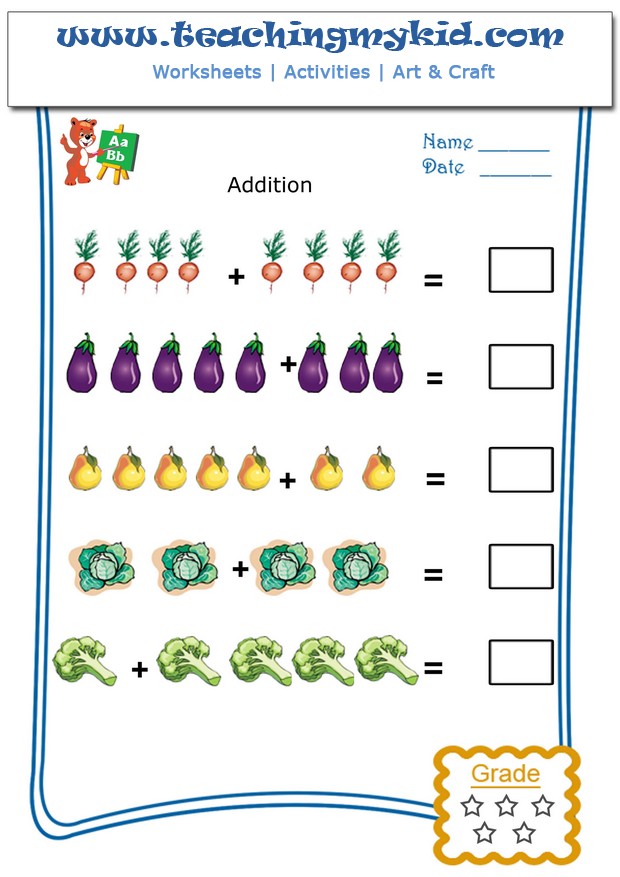 Start with physical objects and flashcards instead of mental math. While the concepts may seem hard for the kids at first, they will gradually learn as the concept is taught in different ways.
Start with physical objects and flashcards instead of mental math. While the concepts may seem hard for the kids at first, they will gradually learn as the concept is taught in different ways.
Learning should also be fun and games, and kids love to draw. They will love this easy, step-by-step drawing tutorial about learning math.
What Age Should Addition and Subtraction be Introduced?Addition and subtraction can be introduced as soon as the children have a good understanding of numbers and counting, according to the different studies on the numerical development of 5-year olds and 6-year olds. While the child should not be bombarded with these concepts, it is perfectly fine to begin with math skills such as addition and subtraction.
Remember to move at the pace of the child and see if the child’s knowledge of numbers and counting is strong. Once you determine the child’s baseline, you can plan lessons accordingly.
How Do You Explain Addition to a Preschooler?The concept of addition can be explained to a preschooler by visualising it as adding or bringing together two or more quantities to make a new total.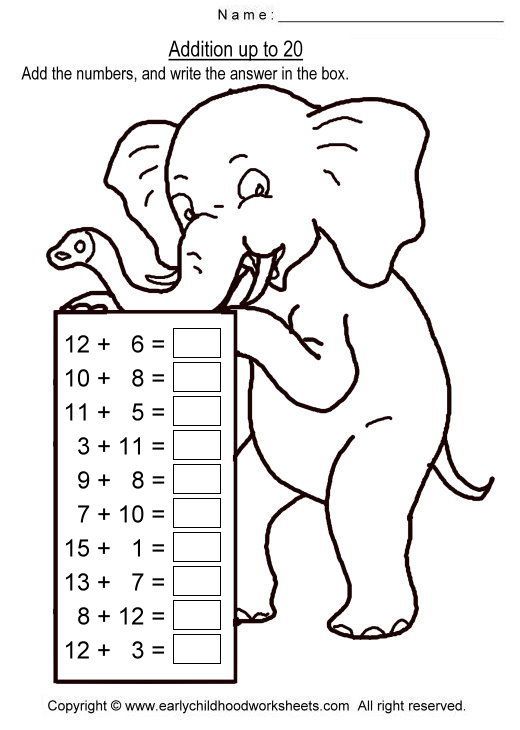 Start with the basics of addition, such as its sign (+) and that it is one of the four arithmetic operations.
Start with the basics of addition, such as its sign (+) and that it is one of the four arithmetic operations.
The best way a preschooler can get started with addition is by using physical objects. This will help make the addition as concrete as possible. The child will also be visually stimulated while using physical objects.
Count the objects together and add one or two to the existing pile. Teach your kid mental math by making him or her repeat the math facts after you.
Keep scrolling if you’re looking for fun and exciting activities to teach the concept of addition to preschoolers.
What Are Some Good Addition Activities for Preschoolers?Some good addition activities for preschoolers are the addition catch game, addition card game, introducing picture books, and using physical objects, flashcards, and abacus.
You can also add a bit of twist to the following activities using your creativity! Keep in mind that the goal is to make learning informative, fun, and exciting for the kids.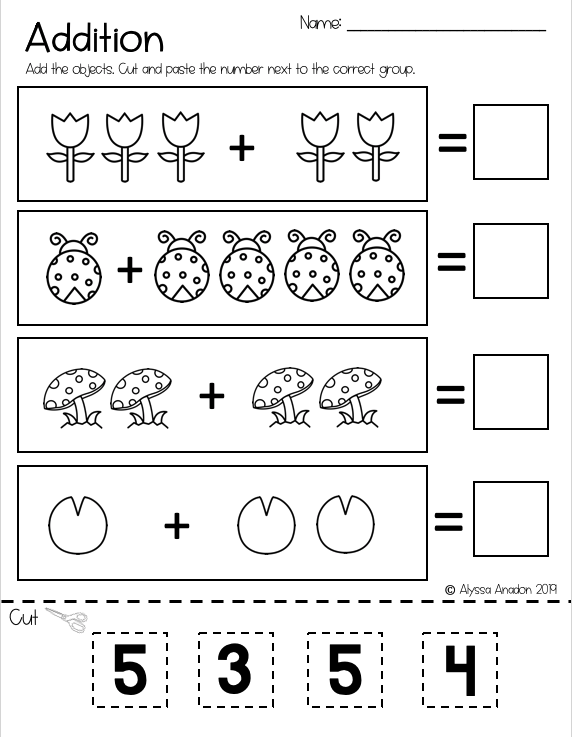 Read on to delve deep into each activity.
Read on to delve deep into each activity.
To play the Addition Catch game, you will need a large ball divided into colored sections. Write simple addition problems without the answer on each section of the ball. The activity is simple. Play catch and throw with your child. Whoever catches the ball has to solve the questions that are written closest to the hands.
It is an excellent activity to teach addition to preschoolers and works best when played in classrooms.
Addition Card GameHere is another activity to teach the concept of addition to preschoolers. To play the Addition Card Game, you only need a deck of cards. Each player should take two cards, add the numbers on the two cards, and give the correct answer. He or she gets to keep the cards only if the answer is right. The player with the most number of cards at the end wins the game.
This is a simple but fun activity. And if there are more than 2 players, the Addition card game will be even more exciting!
Use Physical Objects and FlashcardsPreschoolers can only understand concrete concepts, especially when it comes to math skills.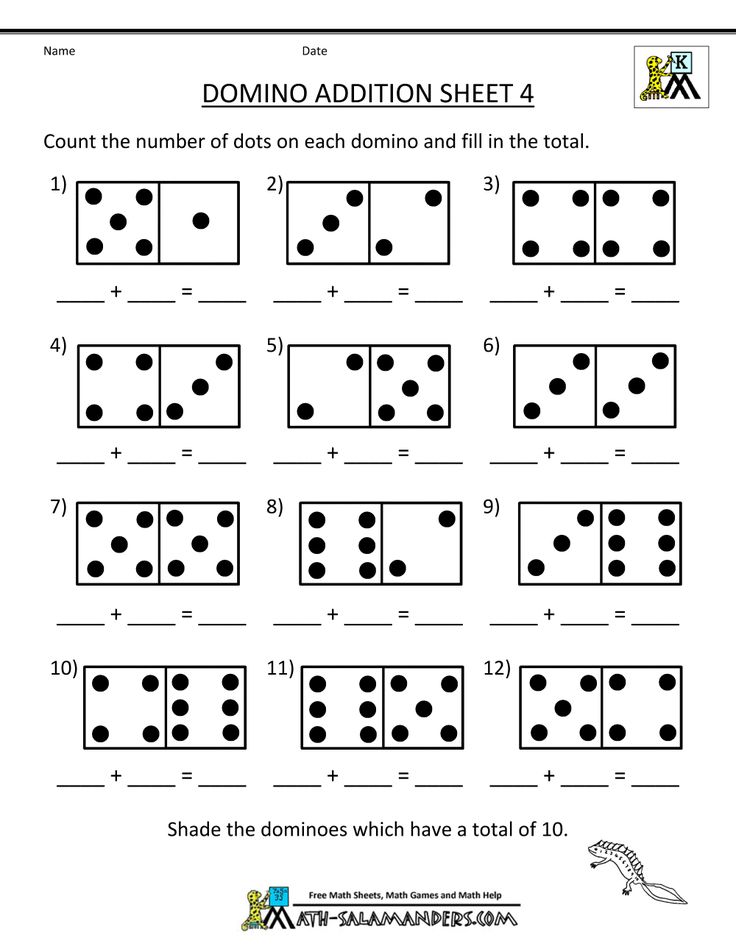 That is why using physical objects and flashcards is one of the best concrete activities out there to teach addition and subtraction.
That is why using physical objects and flashcards is one of the best concrete activities out there to teach addition and subtraction.
For this activity, you will need physical objects and flashcards. Use flashcards with numbers 1-10 written on them. Physical objects can be building blocks, sticks, or anything that is easy to hold and can be manipulated. Note that you’ll need a number of the same object. Avoid using objects of different shapes and colors together as this can confuse children. Also, be careful not to choose sharp objects for the activity.
Here is how you can teach addition using physical objects and flashcards:
Step 1: Present a flashcard with any number between 1 and 10 written on it.
Make the child read out the number written on the flashcard. Now ask the child to count out the objects to match the number on the flashcard. Those objects should be kept together in a pile.
For example, if the flashcard shows number 5, the child has to take 5 objects and keep them together in a pile.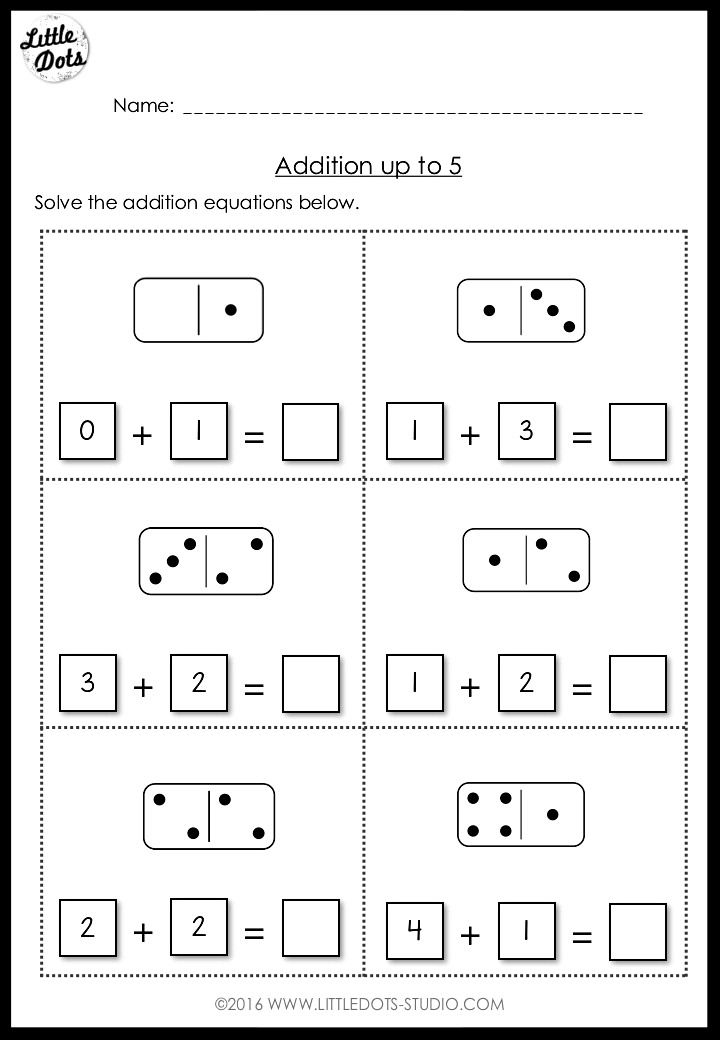
Step 2: Now have your child take another flashcard and look at the number written on it. Discuss the number of objects to be added to the existing pile of objects in order to match the number on the flashcard.
For example, if the second flashcard showed 8, the child has to add three more objects to the existing pile (that consists of 5 objects) to match the number shown on the flashcard, which is 8.
Step 3: Subtraction can also be taught using this activity. For example, if the number on the second flashcard is 3, the child has to remove two objects from the existing pile of 5, to match the number on the flashcard, which is 3.
Once the child gets a hang of the activity, repeat it using different flashcards. Practice it at least once a day and increase the level of difficulty as the little ones get better with simple numbers. You can also introduce new objects so that they don’t get bored.
Use Picture BooksPicture books work best for visual learners.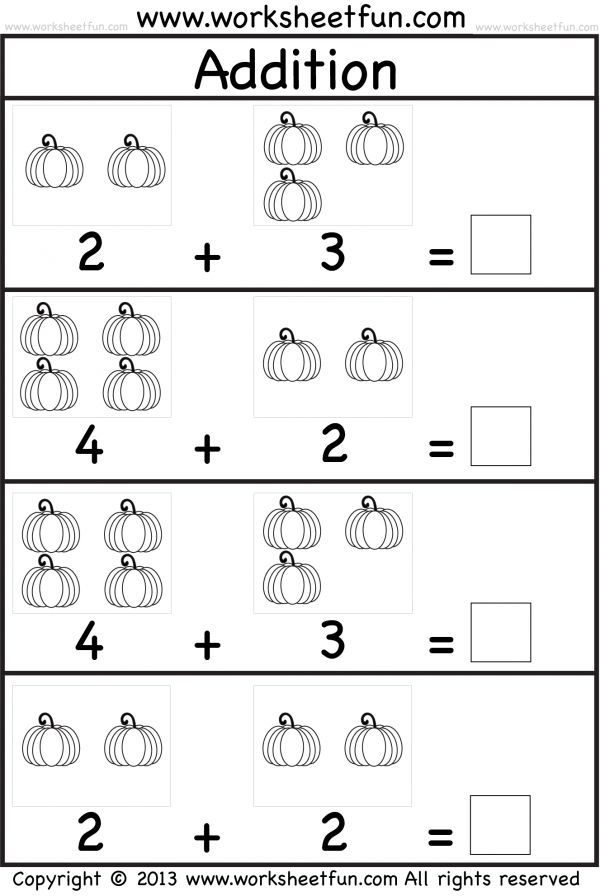 To teach addition using picture books, simply choose a book made for your child’s group; most math books will be labeled by grade level.
To teach addition using picture books, simply choose a book made for your child’s group; most math books will be labeled by grade level.
Sit down with your child and flip through the book together. Show your child if you notice something interesting and appreciate your child if he or she shows an interest in anything in the book. Note that books with bold visuals work best for children as it will be easier to catch their attention.
If your child likes stories, choose books that incorporate math activities inside short stories. Encourage them to repeat after you or try reading the numbers aloud. Make your child count the number of objects in the book and answer questions about addition. Do not forget to reinforce correct responses!
Use an AbacusAbacus is a simple counting tool with rods along which beads are slid. An abacus with brightly colored and large beads will be best for kids as it will be visually stimulating and easy to manipulate.
To teach addition using abacus, push all the beads to one side and place the abacus in front of your child.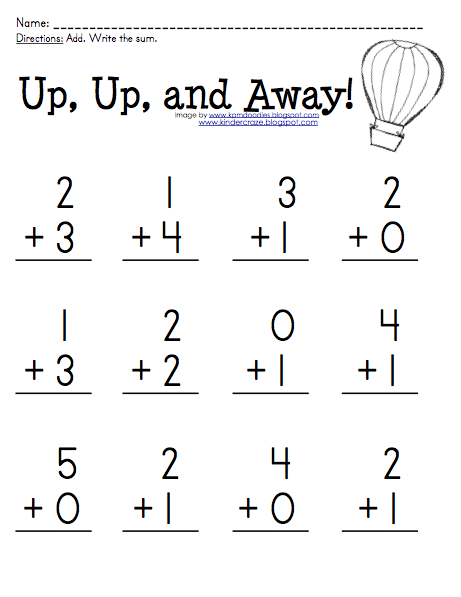 The beads are divided into rows of ten, so start with moving one bead on the top row. Say “1” aloud as you move your bead. Similarly, have your child move a bead on the bottom row and make him say “1” aloud.
The beads are divided into rows of ten, so start with moving one bead on the top row. Say “1” aloud as you move your bead. Similarly, have your child move a bead on the bottom row and make him say “1” aloud.
Now add another bead to the first one on the top row and tell your child that 1+1 = 2. Ask him to add one bead to the first on the bottom row and encourage him to say 1+1 = 2. Continue the activity till you move 10 beads.
You can also teach subtraction using the abacus. From a group of beads on one side, move one to the other side and make your child count the number of beads left. For instance, keep 3 beads together on one side and move one bead to the opposite side. Tell your child that 3-1 = 2 and show the two beads that are left on one side.
Is Subtraction Harder To Teach To Preschoolers Than Addition?Subtraction is harder to teach to preschoolers than addition. This is because subtraction is more abstract than addition as the order is relevant in subtraction.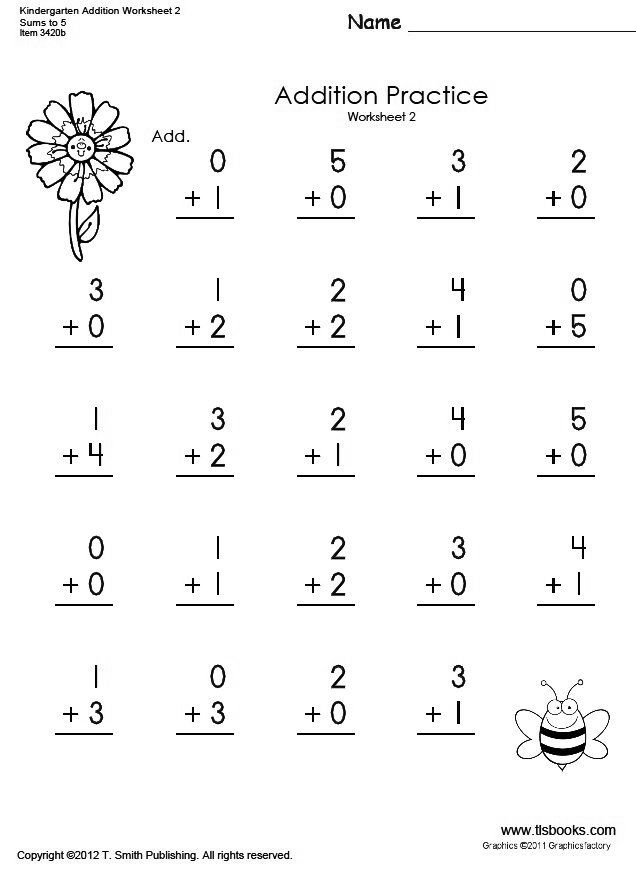 On the other hand, you just need to add numbers together in addition, making it more concrete and easier to understand than subtraction.
On the other hand, you just need to add numbers together in addition, making it more concrete and easier to understand than subtraction.
But this does not mean preschoolers should not be taught subtraction. The concept of addition and subtraction can be introduced as soon as the children acquire a good understanding of numbers and counting as the two concepts are crucial for learning the rest of elementary arithmetic.
What Is The Easiest Way To Teach A Child Subtraction?The easiest way to teach a child subtraction is to introduce basic concepts that would lay the groundwork for quick learning of subtraction, such as understanding that subtraction means taking away something and that it is the opposite of addition.
Subtraction also works best while using hands-on materials. Physical objects would always help make concepts concrete, making it easier for kids to understand.
In addition to explaining what subtraction is, you can try out different fun and interesting subtraction activities given below to teach subtraction to preschoolers.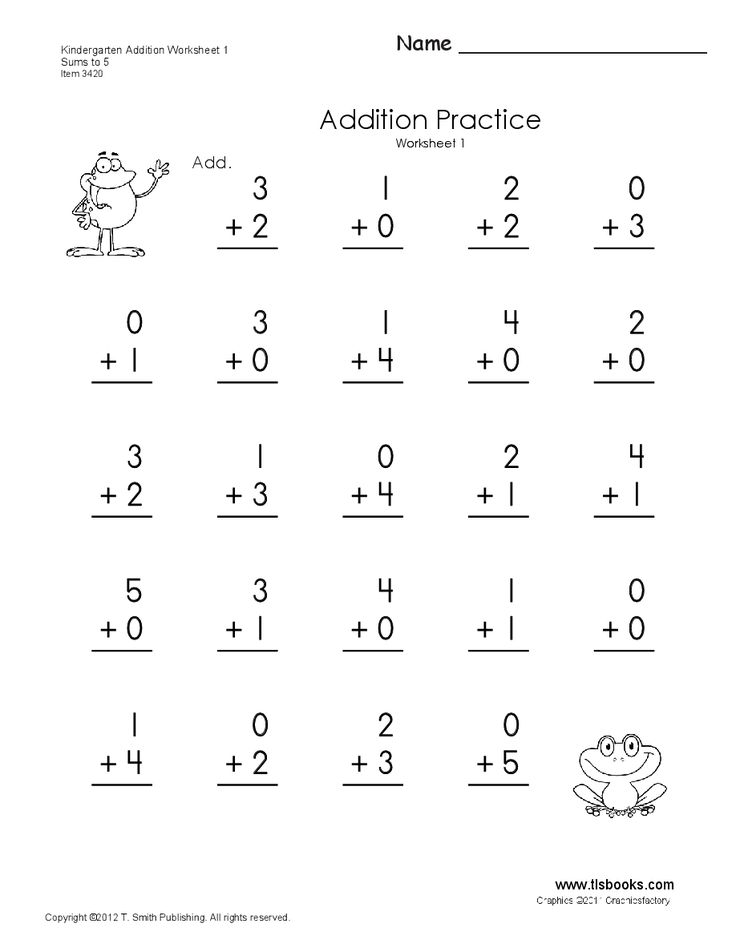
Subtraction activities can be taught by making the child visualise the concept. The best way to do this is to use physical objects and hands-on materials. Here are some interesting activities that can be used to teach subtraction to preschoolers:
Bowling GameSet up ten bowling pins and give the child a ball to knock them over. After the first try, count the number of bowling that are left standing. Have your child calculate the number of pins that he knocked over with the ball. Reinforce by giving an extra trial for every correct answer.
Subtraction Card GamePlayed using a deck of cards, the subtraction card game involves the players taking two cards and subtracting the two numbers on the cards chosen. The player gets to keep the card if the answer is correct. The player with the most number of cards at the end wins the game.
This is a fun and exciting activity and would work best if there are a lot of players!
Use AbacusAbacus can not only help teach addition, it can also make the concept of subtraction concrete.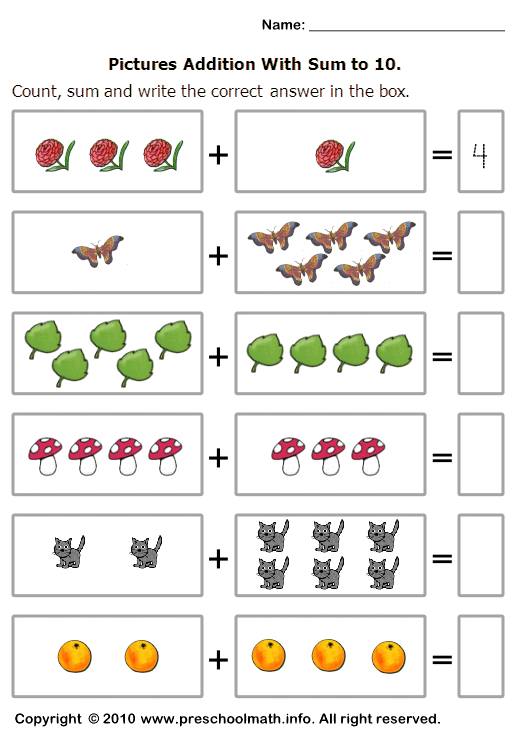 Begin with the activity by moving a group of beads (between 2 and 10) to one side. Make the child count the number of beads on one side and tell him to move one or two beads from the group of beads to the opposite side. Now have your child count the number of beads left on that side.
Begin with the activity by moving a group of beads (between 2 and 10) to one side. Make the child count the number of beads on one side and tell him to move one or two beads from the group of beads to the opposite side. Now have your child count the number of beads left on that side.
The best way to teach addition and subtraction is by making the two concepts as concrete as possible. Preschoolers will not be able to comprehend abstract concepts, so plan lessons that include hands-on materials, physical objects, and things that can visually stimulate the child.
How do I teach my child to add without using fingers?While finger counting is just a visual starter, you can teach children to add without using fingers by using physical objects and flashcards. When there is no hands-on material, children tend to use their fingers to get visual cues in order to perform addition correctly.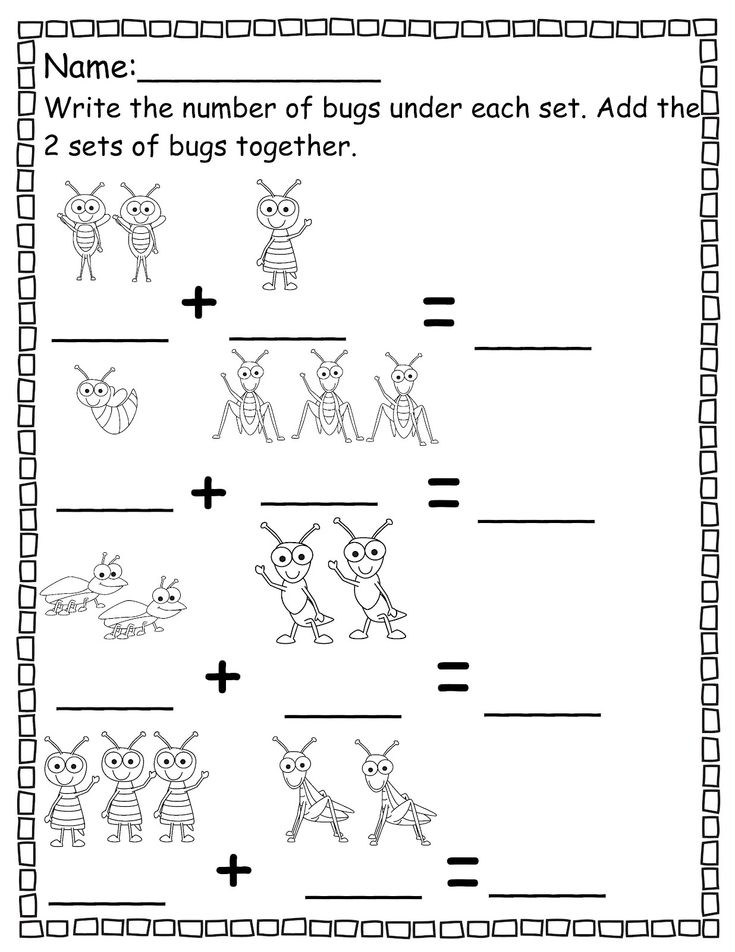
Regrouping in addition can be explained by introducing worksheets and highlighting the grouped numbers, or by using blocks into two columns of tens and ones. You can explain the concept of regrouping to preschoolers if they are familiar with terms like tens and ones.
Sight Wordlist for Pre-K and Kindergarten
Description
The most attractive and enjoyable app list Sight word for Preschoolers as well as Kindergarten to keep practicing to be a good English reader. This free kindergarten word list sight is really a useful application to improve and even increase your English word list sighting through audio sound. It is specially designed for preschool children and caregivers. First of all, lets explain what the word vision is. Sight words are commonly used words that young children are encouraged to remember in their entirety by sight, so that they can automatically recognize those words in print without the need for any decoding strategies.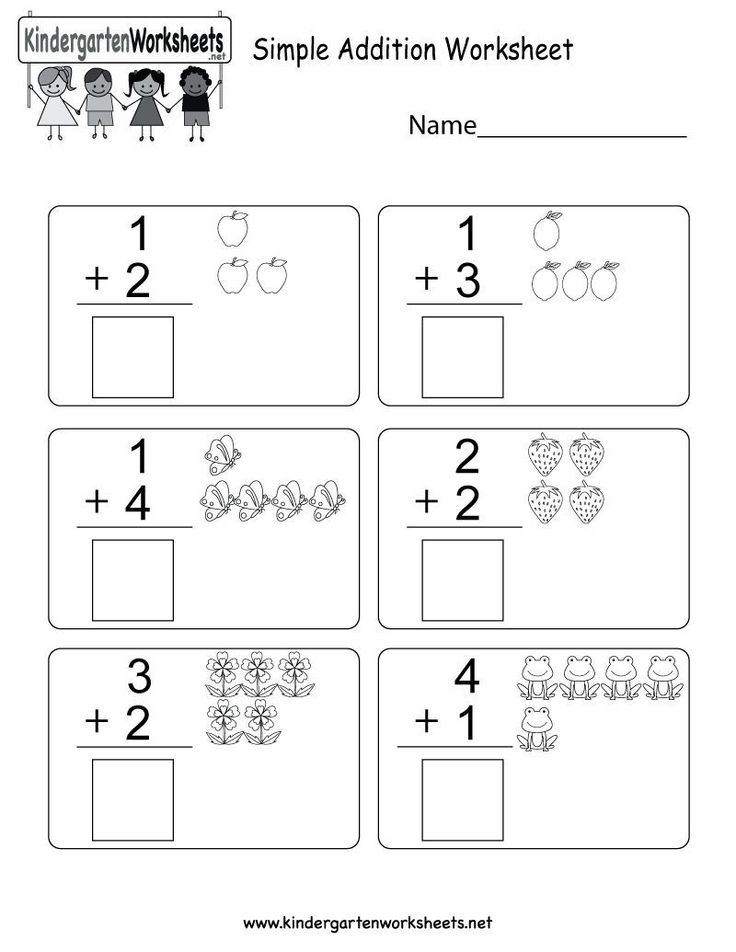 That is to say, this word list look for Preschoolers and Kindergarten application is very useful. Also, an advantage for children being able to recognize the sight of words automatically is that the beginning reader will be able to identify most of the words in the beginning text before they even attempt to read it; In a way that allows the child to focus on comprehension and comprehension as they read non-stop and decode each word. It is extremely important and the best start is to recognize as many vocabularies as possible in order to develop and succeed in language learning. How we, KiddyPop, create this special app for our own children and would like to share with parents who are similarly looking to raise a bilingual or perhaps tri-lingual child. In other words, it is truly continuous development. If you notice any problems or maybe bugs, please let us know by email: [email protected]~~HEAD=pobj. We will fix all of them with free updates. KiddyPop in addition has additional levels of word list sighting such as sight word class 1, sight word class 2 and sight word class 3.
That is to say, this word list look for Preschoolers and Kindergarten application is very useful. Also, an advantage for children being able to recognize the sight of words automatically is that the beginning reader will be able to identify most of the words in the beginning text before they even attempt to read it; In a way that allows the child to focus on comprehension and comprehension as they read non-stop and decode each word. It is extremely important and the best start is to recognize as many vocabularies as possible in order to develop and succeed in language learning. How we, KiddyPop, create this special app for our own children and would like to share with parents who are similarly looking to raise a bilingual or perhaps tri-lingual child. In other words, it is truly continuous development. If you notice any problems or maybe bugs, please let us know by email: [email protected]~~HEAD=pobj. We will fix all of them with free updates. KiddyPop in addition has additional levels of word list sighting such as sight word class 1, sight word class 2 and sight word class 3.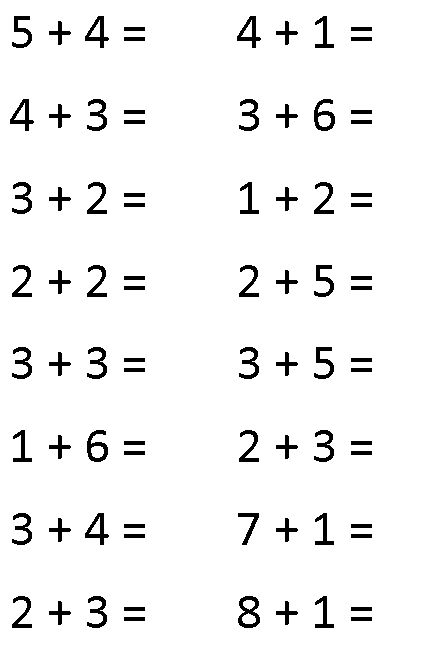 We consistently create useful and practical Sight Word List Programs for our children, just follow KiddyPop to help your child or even self-reading practice in English as 3 following ways:-
We consistently create useful and practical Sight Word List Programs for our children, just follow KiddyPop to help your child or even self-reading practice in English as 3 following ways:-
Check out our website: http://www.KiddyPop.com
Like us on Facebook: http://facebook.com/kiddypoppage
Subscribe our channel on YouTube: https://www.youtube.com/channel/ UC-TlhsD5JGHBbRh4EwiXYcA/videos
Please be aware that it is really an continuing development. Should you have observed any concerns or maybe bugs, please let us know by email: [email protected]. We will fix all of them with free updates.
Prepare for the most friendly Chinese Fruit words application!!!
Version 1.0
The app has been updated by Apple to display the Apple Watch app icon.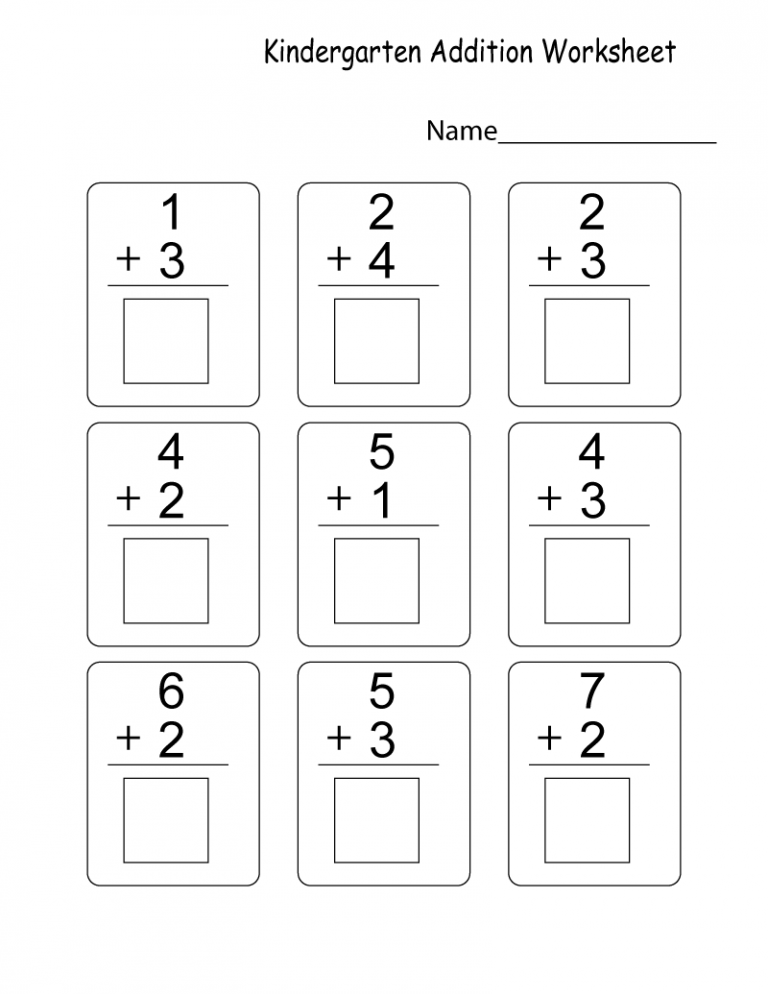
The developer of pimporn rungratikunthorn has not disclosed to Apple its privacy policy or data practices.
N/A
Developer will be required to provide privacy information when submitting the next application update.
Information
- Provider
- pimporn rungratikunthorn
- Size
- 16.3 MB
- Category
- Education
- Age
- 4+
- Copyright
- © 2016 App4smartkids
- Price
- Free
- Application support
Other apps from this developer
You may like
5 main rules for using relative pronouns in English
Relative pronouns are used to introduce attributive clauses.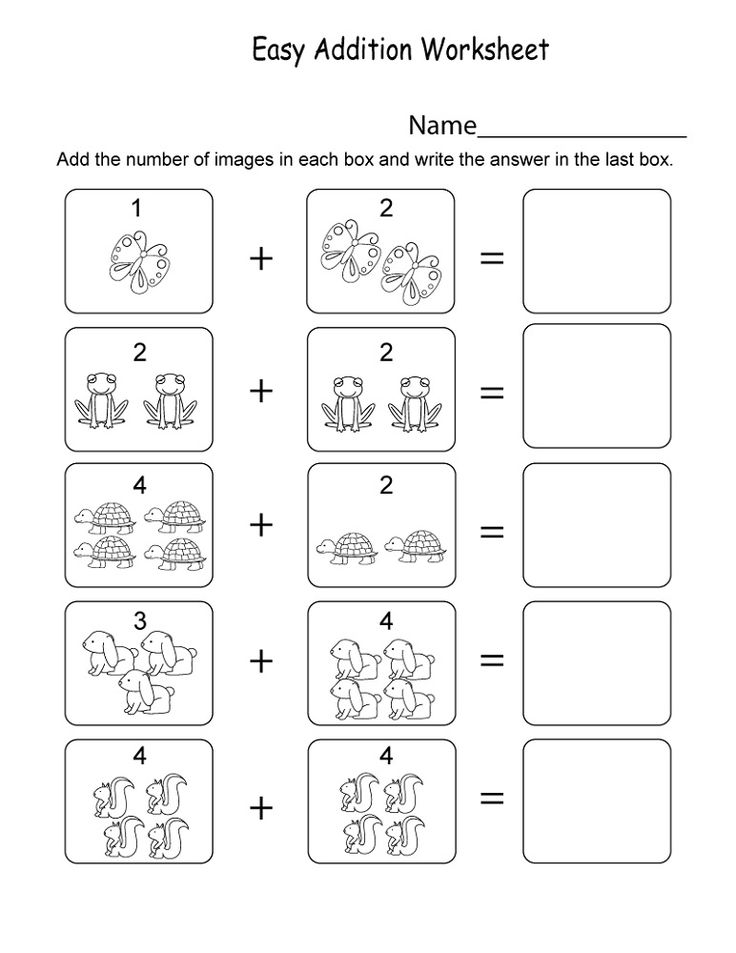 Who, that, which, whom, whose and who(m)ever... How to use them? Now you will know everything!
Who, that, which, whom, whose and who(m)ever... How to use them? Now you will know everything!
English test
Find out your level, get study tips and a promo code for English lessons as a gift
When learning English, you can't get around the important topic of relative pronouns. Their use in the context of subordinate clauses has a number of interesting nuances that it will be useful for you to know.
What are the types of relative pronouns?
In English, the following relative pronouns exist: who (who), that (what, which), which (which), whom (to whom), whose (whose) and whoever / whomever (whoever / whoever ). Basically, relative pronouns are needed in order to introduce relative attributive clauses.
Typically, this kind of subordinate clause refers to the word, phrase, or meaning of the main clause that is the antecedent (the noun or its equivalent to which the following pronoun refers).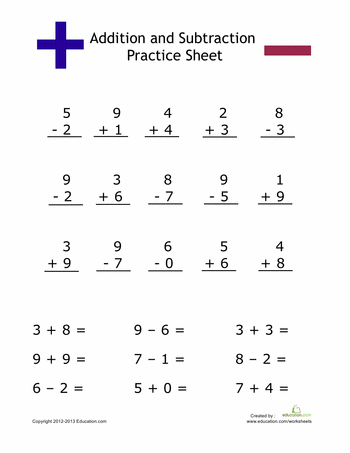
In the following examples, the relative pronouns whom and that act on the subject, which is the antecedent:
The neighbor , whom I saw this morning, crashed his car. — Neighbor , whose I saw this morning, crashed his car.
The cake that Jane cooked was nice and tasty. — Cake , that Jane baked was beautiful and delicious.
The use of one or another relative pronoun directly depends on the type of the subordinate clause. There are two types of attributive clauses: restrictive (clarifying the meaning) and expansive (supplementing new information). In both cases, the relative pronoun can be the subject, object, or possessive pronoun (whose).
Promo code for English lessons at Skyeng
Get your promo code and get up to 3 English lessons at our school as a gift main offer.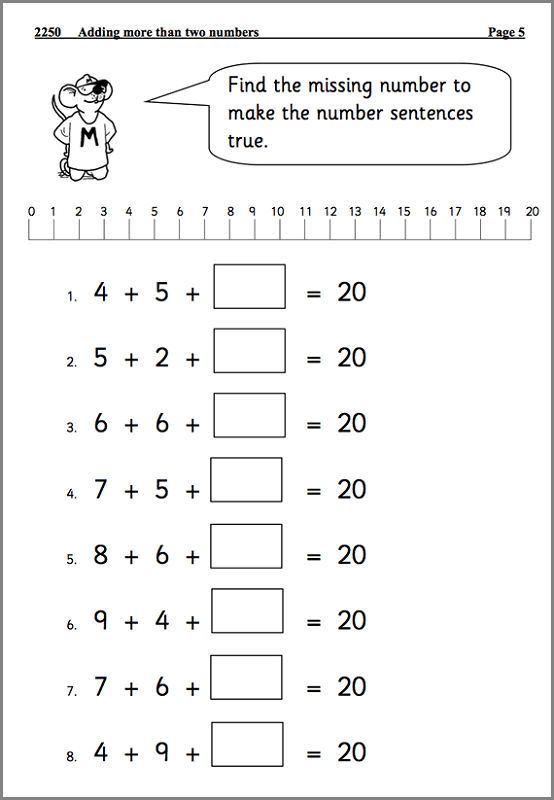 In this case, the subordinate clause communicates important information about the antecedent in the main clause.
In this case, the subordinate clause communicates important information about the antecedent in the main clause.
This information plays a key role in the correct understanding of the meaning of the main sentence, so it cannot be omitted. Simply put, without a restrictive clause, the main clause simply loses its meaning.
Subject relative pronouns
I was nicely surprised to meet guys who also arrived to support their favorite team. — I was pleasantly surprised to meet the guys who also came to support their favorite team.
It will be the party that everyone will remember. - It will be a party that will be remembered by everyone.
Complementary relative pronouns
Complementary relative pronouns that refer to a person or thing can be omitted.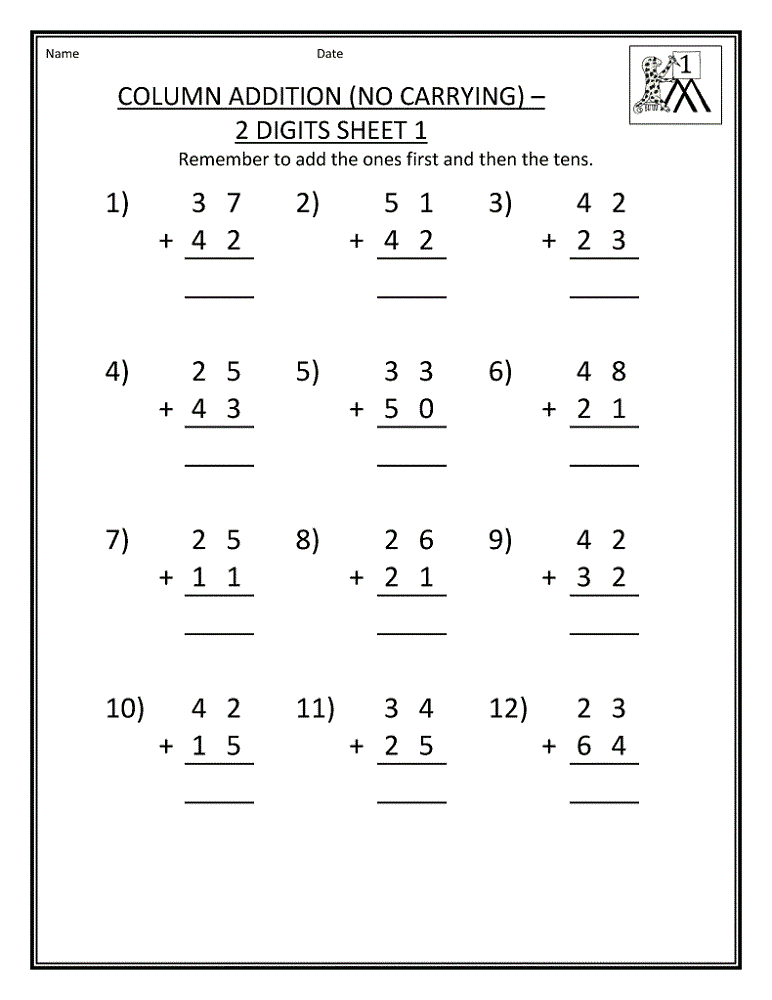 However, official English requires the use of a relative pronoun.
However, official English requires the use of a relative pronoun.
If the relative pronoun is the complement of the preposition which should be used instead of that, for example: in which (in which), about which (about which), for which (for which). Consider examples:
Official English : Dr. Smith was the person to whom I expressed my deep esteem and whose reputation was known to every one. — Dr. Smith was a man to whom I expressed my deepest respect and whose reputation was known to everyone.
Unofficial English : Dr. Smith was the person I expressed my deep esteem to and whose reputation was known to every one.
Official English : There was a wonderful landscape at the exhibition that Jane adored. — There was a wonderful landscape at the exhibition, which delighted Jane.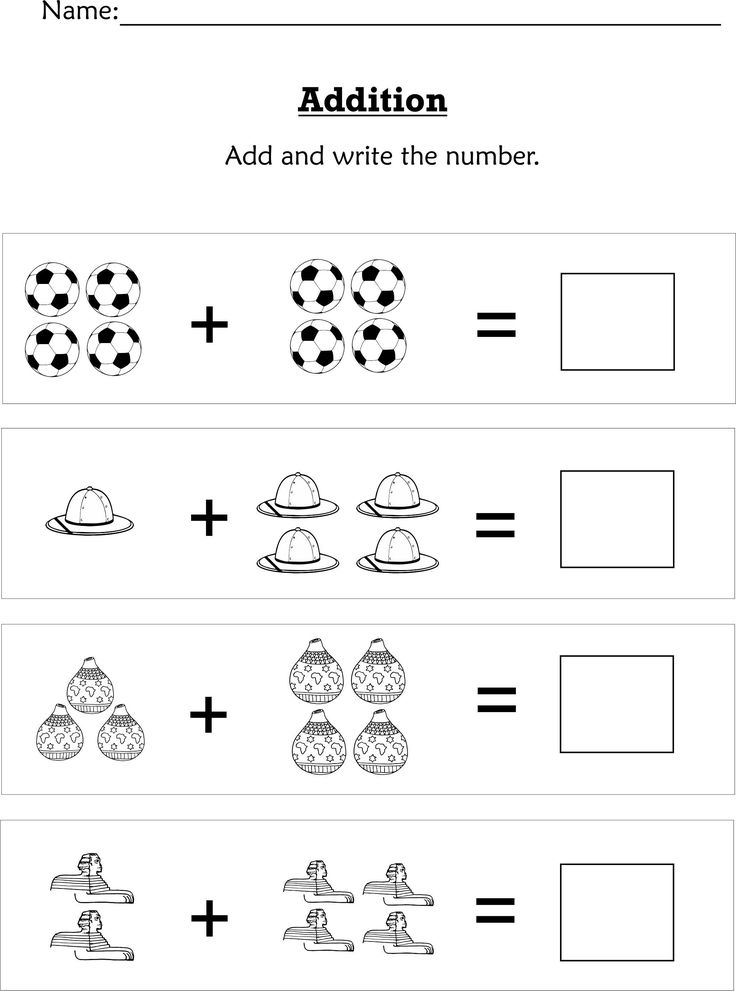
Unofficial English : There was a wonderful landscape at the exhibition Jane adored.
Official English : Tom achieved the cave about which he had heard so many tales. Tom has reached the cave about which has heard so many legends.
Unofficial English : Tom achieved the cave he had heard so many tales about.
In American English, the relative pronoun whom is used quite rarely and is usually replaced by who, and in colloquial speech it is completely omitted:
Official version of : The man to whom you said hello in the morning is my uncle. — The person whom you greeted in the morning is my uncle.
Colloquial : The man you said hello to in the morning is my uncle. (The man who you said hello to in the morning is my uncle.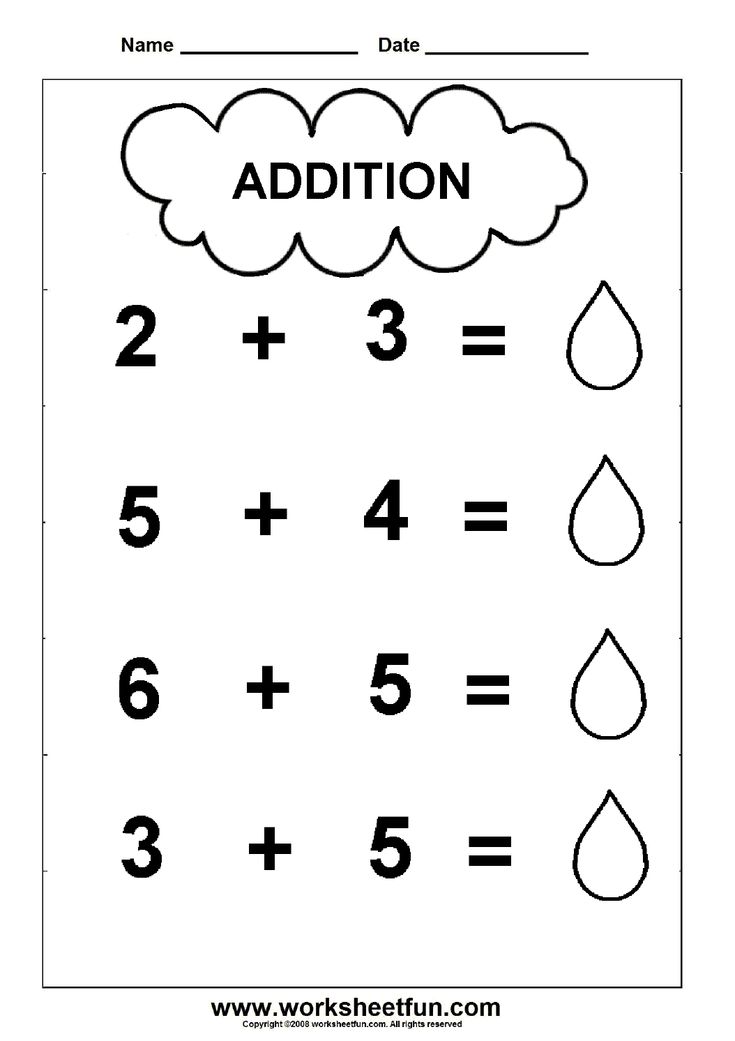 )
)
However, if the relative pronoun whom is after the preposition and is its object, it cannot be omitted:
The man for whom she was waiting so many years finally appeared. — Finally a man appeared, which is she has been waiting for so many years.
Relative pronouns as possessive pronouns
In English, only whose is a possessive relative pronoun. Its antecedent can be both persons and objects.
The boy whose toy engine broke yesterday was presented a new beautiful toy truck. - Boy , whose car broke down yesterday, got a new top-notch toy truck.
The bag whose owner got off the bus was delivered to the nearest lost-property office. — Bag, whose owner got off the bus, was delivered to the nearest lost and found office.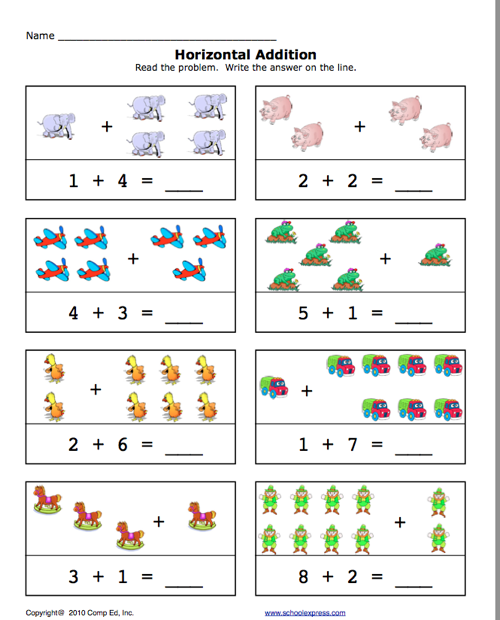
Relative pronouns in clauses
Despite the similarity in usage, relative pronouns introducing clauses are separated from the main clause by a comma. Usually which is a sign of a subordinate clause.
As a rule, distributive clauses do not carry valuable information about the antecedent in the main clause. This information is not key in the correct understanding of the main sentence and can be omitted without losing its meaning.
In other words, the expansion clause is an indentation that provides additional information. Let's find out in what qualities relative pronouns can be used in relative clauses.
Subject relative pronouns
- The summit, which lasted for three days, resulted in signing a set of important agreements. - The result of the summit, which lasted for three days, was the signing of a package of major agreements.
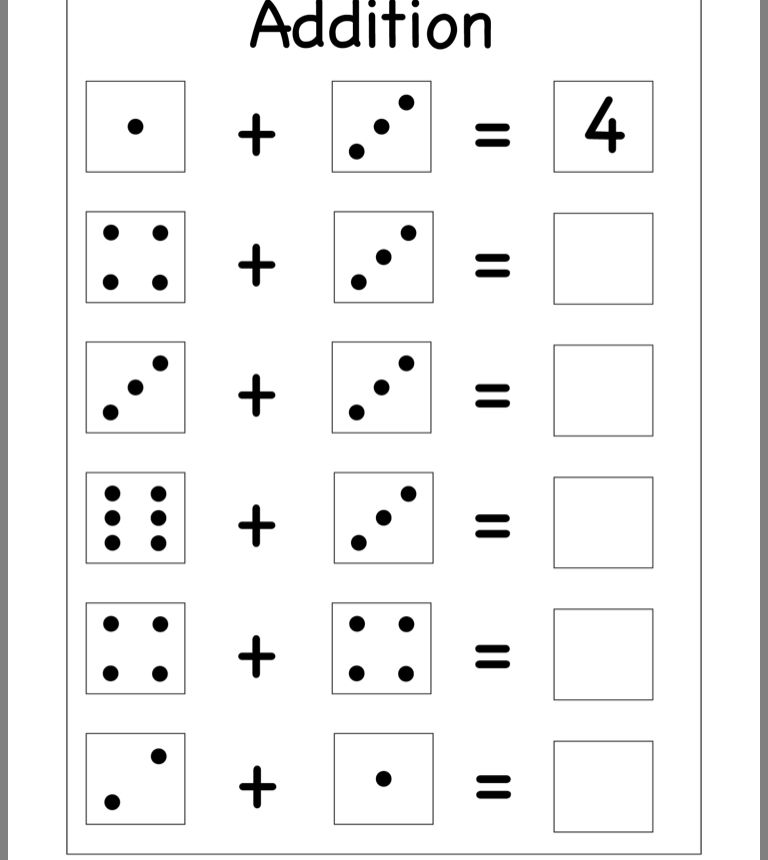
Complementary relative pronouns
- The movie, which he admired, was going to be shown in the cinema. - The film, which delighted him, was going to be shown at the cinema.
Using That or Who/Which
The relative pronoun that is used only in restrictive clauses. It can also be replaced with who (in relation to persons) or which (in relation to objects). The word that is often used in colloquial speech, but who and which are more common in written English. For example:
- Spoken English : Robert Burns is a Scottish poet that wrote a lot of wonderful poems and songs in the Scots language and standard English. — Robert Burns, Scottish poet, who wrote many wonderful poems and songs in the Scottish dialect and standard English.
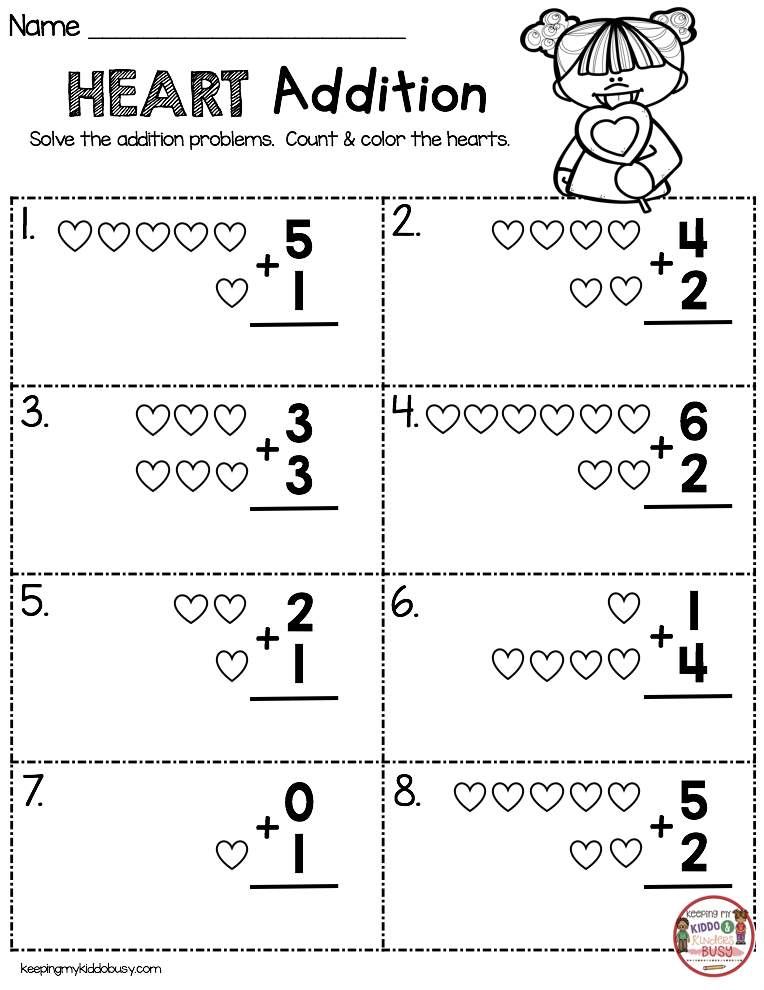
- Written, formal English : Robert Burns is a Scottish poet who wrote a lot of wonderful poems and songs in the Scots language and standard English.
Special rules for the use of relative pronouns
Who or That
When describing people, informal English allows the use of both who and that. But if we are talking about the characteristics or abilities of a person / group of people, then it is better to use the relative pronoun that (although the use of who is also allowed):
- She is the kind of woman that always looks charming. – She is the kind of woman who always looks charming .
If in official style we are talking about a specific person, who is preferable to use:
- The man who won the prize was a cookie.
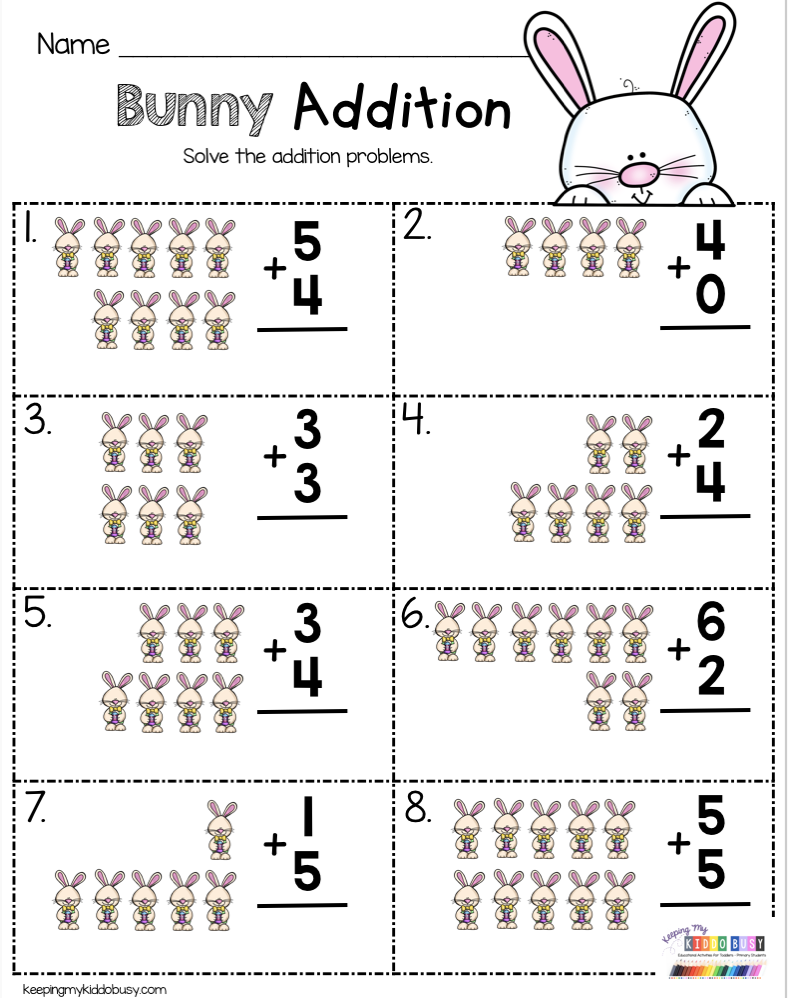
Learn more

